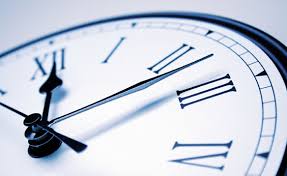By Dr Murray McDonald


So you've done the right thing and consulted your chiropractor for your pain. But you need to know and thus ask a very tough question: how long until I’m better?
How many treatments will it take?
This is dependent on so many factors:
- the specific condition being treated - a 1st time sacroiliac pain could take 1 or 2 sessions, whereas a traumatic disc injury can take months
- how long you had the pain before getting treatment - generally the longer you wait, the longer it takes to treat
- the patient’s individual immune/neurological system - some people’s body’s bounce back quickly, some stay sensitive for a long time
- biomechanics and daily stress levels (physical and mental) - how much daily strain are you under?
From the 1st consultation, a plan should be discussed for how long it should take, along with ways to track your progress. On average, for most conditions, 3-5 treatments are usually adequate to control the worst symptoms – more severe and/or chronic pain will often take longer. And once the worst is over, future appointments in the future are sometimes advised to ensure a full return to health and activity.
Avoiding re-injury or aggravation
Generally speaking, the cause of most pain in the muscles and joints is due to some sort of overload. This may be sudden (like a fall or lifting heavy stuff) or build up for a long time (poor sitting posture). While you’re healing, it is very important that you avoid any overload to the area. This could mean avoiding lifting/carrying heavy things, correcting poor posture, avoiding repetitive movements, and avoiding placing the joints and muscles in compressed/stretched positions for long time periods. That being said, the sooner you can start your regular activities and exercise, the better you’ll recover. Your body needs activity to stimulate recovery of the bones, muscles, and nerves. Load your body, don’t OVERload it.
Homework!
Here are a few things you can do to improve your recovery
- Avoid things that may aggravate your condition (as mentioned above)
- If the area is throbbing and painful: ice for 20mins every hour; or 15mins on/15mins off as necessary. Don’t use raw ice on your skin or leave it on for longer than 20mins as it can cause frostbite.
- A heat pack can also be used for pain (except if the area is swollen), but try not to leave the pack on for longer than 20mins as it causes blood to pool in the area.
- Tight muscles can be lightly stretched: stretch the muscle until you feel light tension, then gently pull the stretch slightly deeper and hold for 30 seconds; release the stretch slowly, rest for 5-10s and then repeat 2-3 more times
- Rub-on gels and creams that make your skin tingle (e.g. BioSoothe) can provide some relief
- Pain killers and anti-inflammatory medication can be used to manage the pain but don’t become dependent on them – they are treating symptoms not the underlying cause.
In the end, it takes a combination of correct diagnosis, an appropriate treatment schedule, and paying attention to your ‘homework’ that gives you the best chance of recovering swiftly. So make sure you have all three!
Thank you for reading.